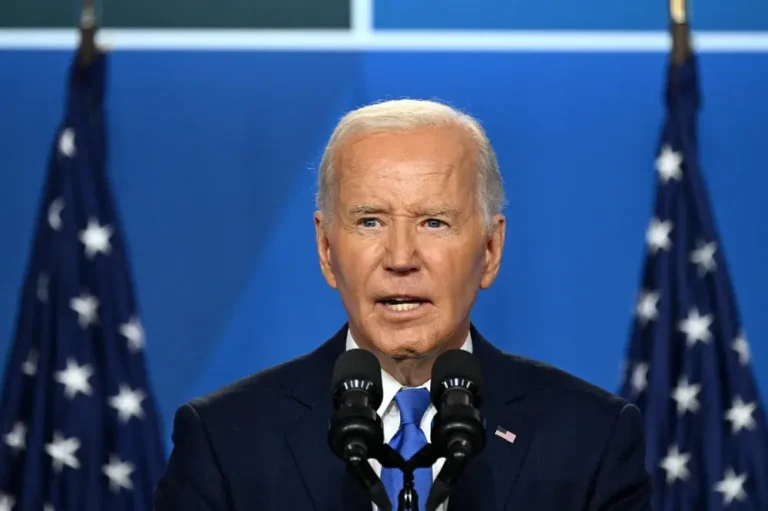Weak shipbuilding could be the US Navy’s Achilles’ heel in a war with China
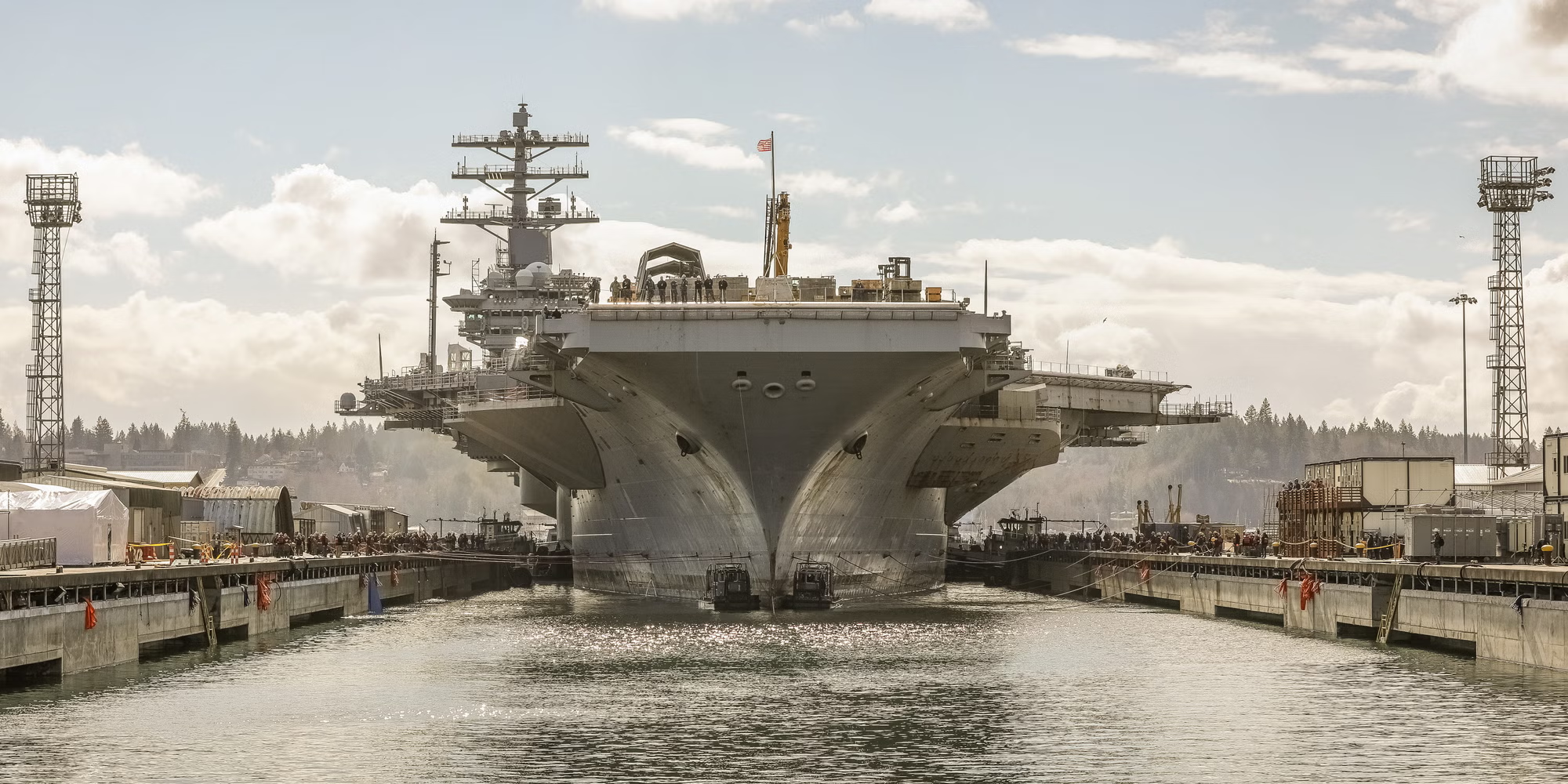
The US Navy’s shipbuilding muscles have atrophied, leaving it with a serious problem amid China’s massive military buildup.
The US Navy faces critical shipbuilding problems that could hobble it in a war with China.
The Navy’s aging fleet of aircraft carriers, destroyers, and submarines faces lengthy maintenance and repair backlogs, and it can’t build new warships fast enough. Yearslong delays and cost overruns are plaguing new construction.
These are all symptoms of a larger issue: the hollowing out of the vast American shipbuilding industry the Navy depends on.
Nowhere are the stakes higher than in the Indo-Pacific, where a US Navy not at full strength could face a substantial Chinese battle force and an expanding arsenal of anti-ship missiles. In this scenario, American warships are unlikely to sail away unscathed, and US industrial capacity may not be up to the task of repairing them or building replacements fast enough, officials and naval analysts have warned.
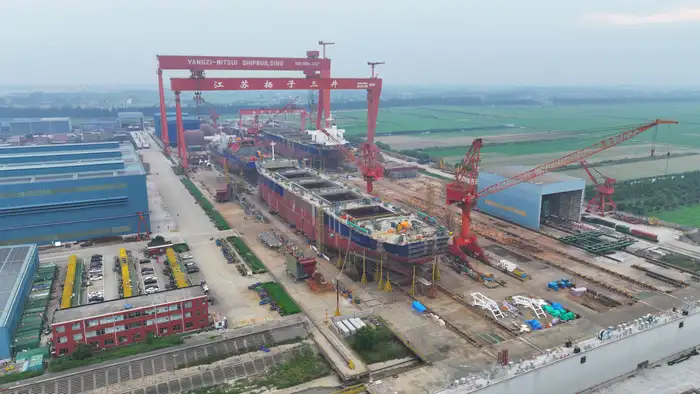
China’s commercial and military shipbuilding capacity overshadows the rest of the world.
China boasts the largest navy in the world, and its sprawling shipyards rapidly pump out warships and commercial vessels, potentially allowing it to absorb losses more easily than the US Navy. As it stands, China’s yards can simply outbuild the US’s.
“Given the shipbuilding challenges, the budget situation, and challenges with recruiting and retention, the Navy is at a crossroads as it faces rapidly evolving threats from peer adversaries, such as China,” Shelby Oakley, a director in the US Government Accountability Office who oversees the office’s investigations of Navy shipbuilding, told B-17.
Why is so much warship work behind schedule and over budget?
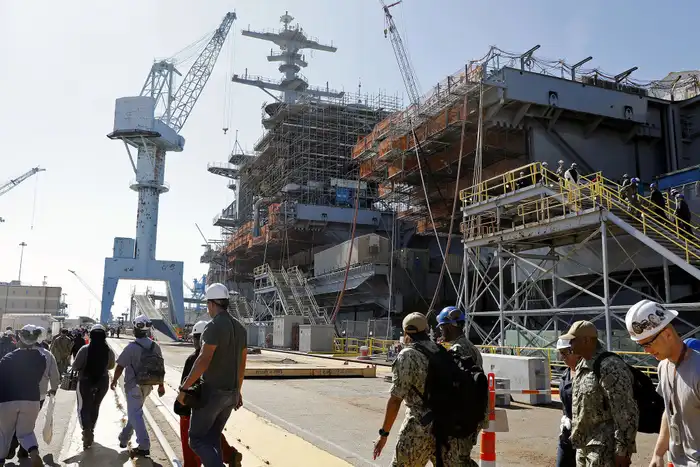
Officials have pointed to supply chain, workforce, and capacity issues.
The US shipbuilding industry is a shadow of what it was in the final years of the Cold War. The Navy is reliant on only a handful of major shipbuilders that design and construct different ship classes: Huntington Ingalls Industries (aircraft carriers, submarines, amphibious ships, destroyers), General Dynamics (submarines, destroyers, support ships), and Fincantieri Marinette Marine Corporation (frigates). Higher production rates would require infrastructure costs and a larger workforce. Repair and maintenance are likewise constrained by the few public yards available.
A Department of the Navy review earlier this year found that top US Navy shipbuilding projects, from new submarines to surface ships, are delayed by years and facing ballooning costs.
The longest project delays, expected to be at least three years, are for the coming Block IV Virginia-class attack submarines and the Constellation-class guided-missile frigate. The Navy’s first Columbia-class ballistic missile submarine, a priority for the Pentagon, isn’t expected to arrive until 12 to 16 months after its planned delivery, potentially leaving a hole in readiness plans for the nation’s nuclear forces. And the Navy’s next Ford-class carrier, USS Enterprise, faces a delay of 18 to 26 months.
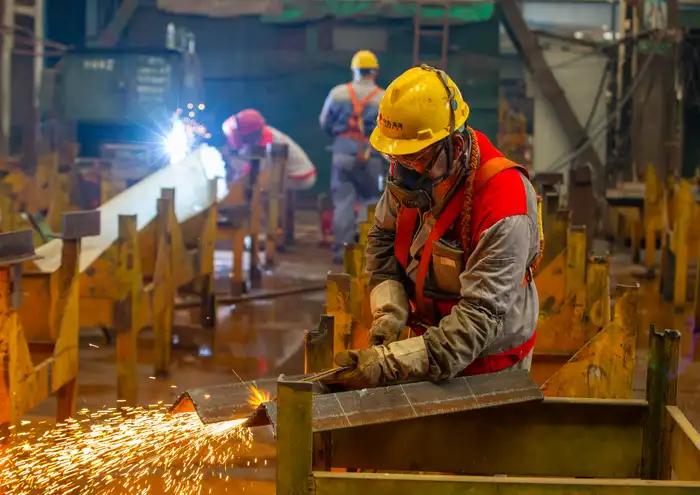
The lines between military and commercial shipbuilding in Chinese yards are often blurred.
Navy officials, analysts, and industry figures attribute delays to a range of challenges, including a lack of coordination among the stakeholders, inconsistent defense budgets, shifting Navy requirements, the lasting impacts of COVID-19, inflation, a dwindling workforce, and supply-chain issues.
Other factors include backlogs and program mismanagement on top of a shrunken industry where sole-source suppliers are awarded projects with limited market competition. Shipbuilders, dependent on materials from overseas, are regularly left waiting for parts to arrive, and pre-pandemic contracts are now out of sync with the current economy.
Oakley said that the GAO had observed consistent issues with Navy cost estimates, which “are often lacking and the assumptions unrealistic.”

Most of the Navy’s top-priority shipbuilding programs are delayed and over budget.
Shipbuilders begin work before designs are finished, resulting in out-of-sync work, but the Navy’s budget doesn’t adjust for cost increases and extended schedules. That reduces “the Navy’s buying power” and contributes “to program instability,” Oakley said.
That leaves the industry in an uncertain position. Paula Zorensky, the vice president of the Shipbuilders Council of America, told B-17 that while shipyards make long-term investments to meet the Navy’s demands, the Navy has pulled back on planned programs. “That inconsistent demand signal contributes to uncertainty in the industrial base, which was already contending with broader economic challenges of inflation, delays caused by the pandemic, and other economic factors,” she said.
The Navy has consistently encountered problems building the fleet of at least 355 ships it has said it needs. Challenges with new technologies bogged down the first-in-class aircraft carrier USS Gerald R. Ford; the Zumwalt class was cut to just three stealth destroyers and left without ammo for its main guns; and the flawed littoral combat ships are already being decommissioned even though some of them have been in service for just a few years.

Problems with the Columbia-class submarine program could hurt US readiness for conflict.
The Navy’s push toward increasingly advanced designs and platforms has, in some ways, contributed to issues as well, Bryan Clark, a former Navy officer who’s now a defense expert at the Hudson Institute, told B-17. “If you look at it, pretty much every class of warship the Navy’s building right now is behind schedule, and that’s because the requirements have grown faster than the shipyard’s capacity to deliver them.”
It’s a complex problem that the Navy is dealing with as it also struggles to maintain and repair its existing fleet. While the submarine force is seen as critical to US combat power in the Pacific, it was reported in 2023 that 40% of the 49 submarines available at the time were idling, waiting for maintenance due to worker shortages and supply-chain problems.
Mackenzie Eaglen, a senior fellow at the American Enterprise Institute, wrote in September that the Navy needed to break what she called the “doom loop.” Costs for shipbuilding, maintenance, and repairs continue to rise as the fleet ages and shrinks and new construction issues arise. And while the Navy criticizes shipbuilders, shipbuilders are lamenting the rising costs of wages, inflationary pressures, and budget uncertainty.
What does that mean in a war?
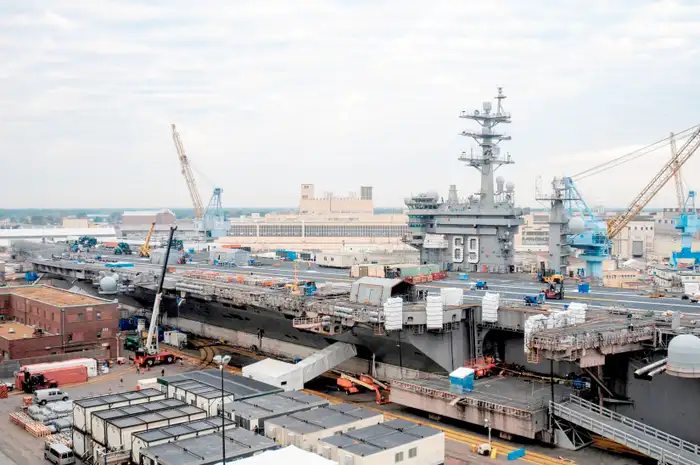
Peacetime shipbuilding issues spell trouble for a wartime scenario.
The US Navy has not been in a naval war since World War II, when its shipbuilders rapidly expanded the fleet to 6,768 ships, eight times what the Navy had at the time of the Pearl Harbor attack, by the war’s end, overcoming the losses of high-end naval combat. Many naval experts say the US couldn’t do anything like that today.
“When inevitable combat damage occurs, we may not have the capacity to get ships back into the fight,” Bryan McGrath, a retired naval officer and the managing director of The FerryBridge Group LLC, told B-17.
The GAO reported in 2021 that battle-damage repair capabilities would be critical in a fight against a peer or near-peer adversary, especially if the US cannot build new ships or replace ones lost in battle, but that is lacking. The agency reported that “battle damage repairs may further exacerbate” the “ongoing shipyard challenges to keep up with regular maintenance demand,” only making things worse.

Jiangnan Shipyard was recently expanded and is now being merged with another yard.
China has pursued a substantial naval buildup and the capacity to replace lost vessels or repair damaged ones by making shipbuilding a national priority. Unclassified US Navy data suggests China has 230 times the US capacity. Much of its strength there comes from its commercial shipbuilding, which shares yards and resources with its military.
Shipyards like Dalian in northeastern China, Huangpu Wenchong near Hong Kong, and the Jiangnan and Hudong-Zhonghua yards near Shanghai are all operated by subsidiaries of the state-owned China State Shipbuilding Corporation. Together with other yards, they are delivering on Chinese national defense ambitions while also dominating commercial shipbuilding.
“I don’t even think they’re really playing the same game, to be honest with you,” Matthew Funaiole, a senior fellow with the China Power Project at the Center for Strategic and International Studies, told B-17. While the US has struggled in recent decades, losing its edge in the commercial shipbuilding industry to foreign competitors that can build cheaper, China’s expansion has made it the global shipbuilding leader.
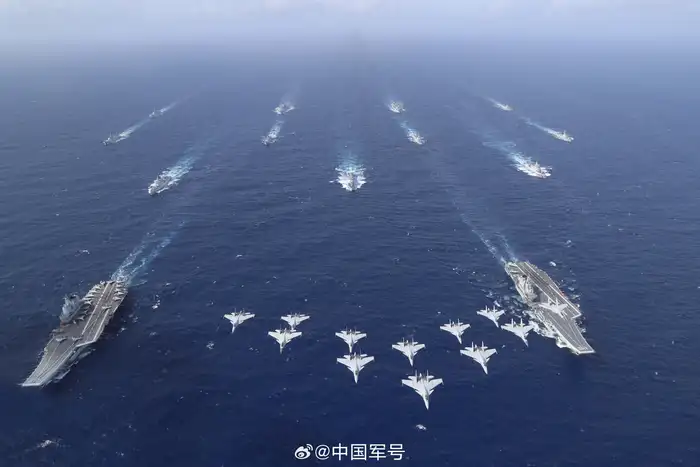
China has pursued shipbuilding dominance over the past few years, building a massive naval fleet.
An important debate centers on quality versus quantity. China has the numbers, but the US still maintains more advanced, combat-proven warships. It is an “indisputable fact that US warships are the envy of the world, that no other nation on Earth comes close to our ability to field incredibly powerful, networked, and survivable warships,” said McGrath, who commanded the destroyer USS Bulkeley.
But that edge is not guaranteed. In 2020, the US Office of Naval Intelligence said China’s ships were increasingly comparable to US ships. Technological advances will likely strain China’s shipyards as they have US yards. And with a much younger fleet, China’s maintenance and repair capacity hasn’t really been put to the test yet, but that younger fleet also means it isn’t grappling with some of the challenges the US is facing.
How does the US fix this?
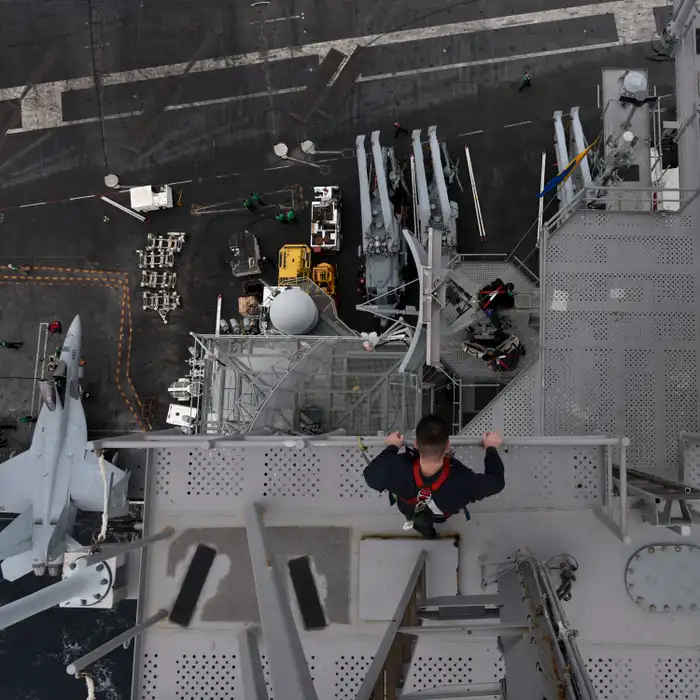
Long-term investments and solutions are needed to fix the US Navy’s shipbuilding problems.
The US Navy’s shipbuilding woes aren’t new, and there simply isn’t a quick fix.
Earlier this year, Adm. Lisa Franchetti, the chief of naval operations, said that the force needed to be ready for the possibility of a war with China by 2027, which is when the US has assessed Beijing has ordered its military to be ready to seize Taiwan. That date does not mean conflict is inevitable; it’s a benchmark.
While it’s impossible for the Navy to catch up to China’s shipbuilding might by then, Franchetti has suggested the focus should be on readying current platforms and fixing maintenance issues. Autonomous systems are also a priority for the Department of Defense and could shape how the US fights China. Beijing, too, is working on similar systems.
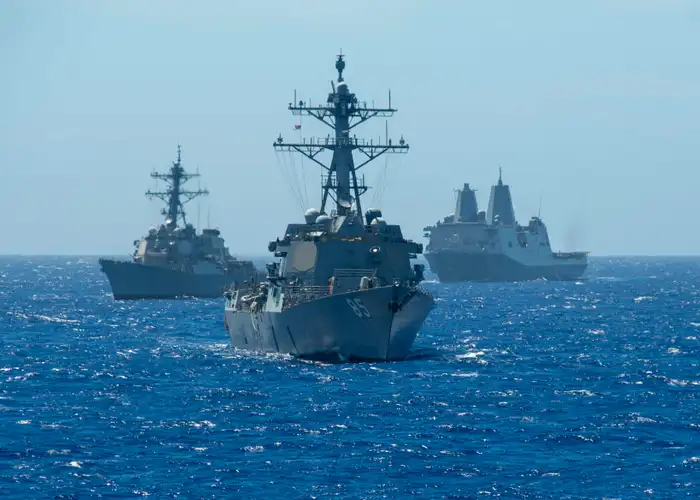
Experts and analysts have raised questions about the quality of American warships compared to China’s navy.
The US Navy fights as part of a joint force, one that has been investing in anti-ship capabilities, intermediate-range fires, and other measures to blunt China’s edge.
But in the long term, experts and analysts have said the US needs to make significant investments in rejuvenating its military shipbuilding capabilities and capacity, ramp up production, and streamline its design process. A clearer strategy for industry and establishing stable supply chains, as well as hiring and keeping talented workers, is critica
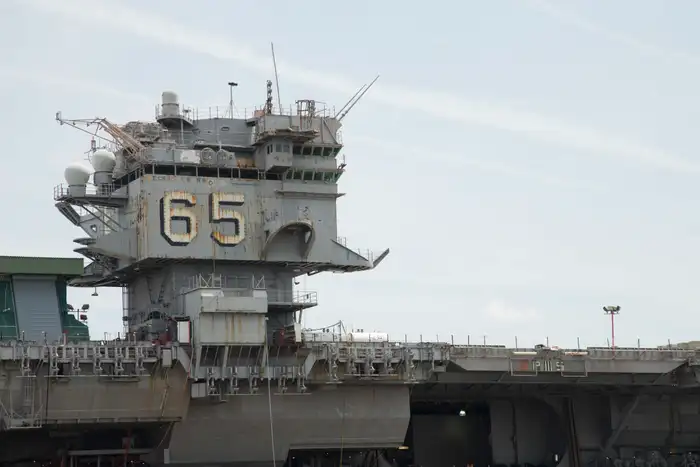
The US is looking to the shipbuilding capabilities of its Pacific allies.
The US also sees opportunities with allies in the Pacific. US Navy leadership has praised Japan and South Korea for their strong shipbuilding industries and has considered partnering with them to revive dormant US shipyards and reduce China’s advantage.
Despite shipyard struggles, the US remains the top naval power for the time being.
“Even if the process is not pretty at times, the Navy builds the most powerful and capable warships on the planet in the US with American workers,” Oakley said. “The people of the Navy and the industrial base are hardworking and focused on the evolving threats we face as a nation. In addition, the contractor workforce has some of the most highly skilled welders, electricians, and pipe fitters in the world.”

